Where to dig in?
If you are looking for the best gardening books for beginners, you’ll want to start with “Rodale’s Basic Organic Gardening” by Deborah L. Martin, which covers essential fundamentals like soil testing, composting, and organic fertilizing methods using beginner-friendly vocabulary. “CaliKim’s Organic Gardening for Everyone” offers clear visuals and approachable instructions for chemical-free growing, while “Martha Stewart’s Gardening Handbook” provides extensive coverage including pest control basics. These books teach pivotal topics like proper watering techniques, plant spacing, and tool selection that’ll set you up for gardening success, and exploring these all-encompassing guides will reveal even more specialized techniques.
Top-Rated Beginner Gardening Books That Cover All the Basics
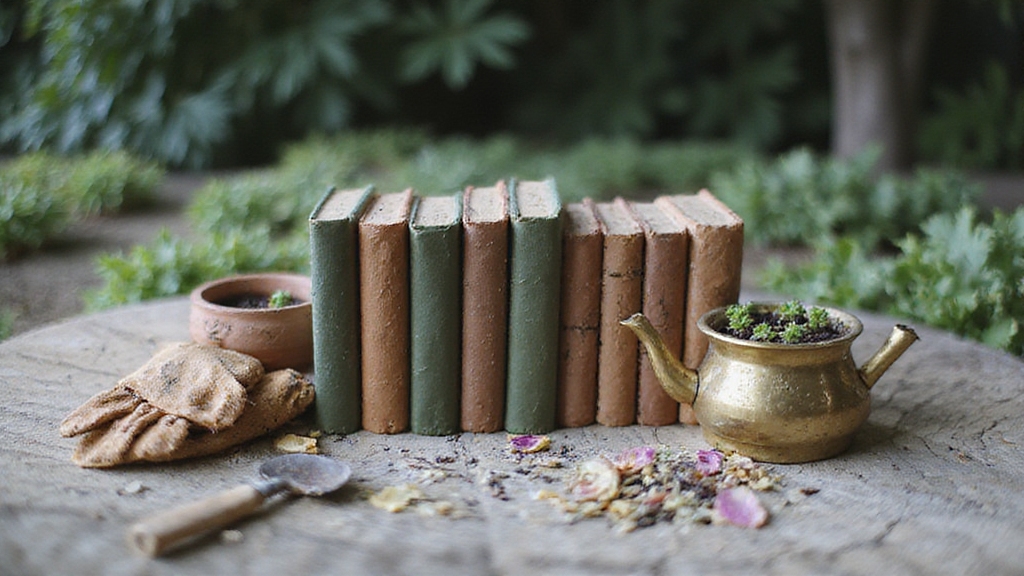
Starting out with gardening can feel overwhelming, but the right guidebook will set you up for success from day one. Rodale’s Basic Organic Gardening delivers thorough/extensive/detailed coverage of essential fundamentals, from creating garden beds to caring for vegetables, herbs, and flowers. You’ll learn proper watering, mulching, and weeding techniques alongside organic fertilizing methods. The book’s accessible glossary builds your gardening vocabulary quickly.
CaliKim’s Organic Gardening for Everyone makes learning approachable regardless of your experience level or garden size. Clear instructions guide you through soil preparation and planting basics, while engaging visuals help you understand concepts faster. It’s a great reference for organic practices essential in modern sustainable gardening.
Martha Stewart’s Gardening Handbook walks you through the complete process, from initial planning to ongoing maintenance, blending traditional wisdom with modern techniques that work for novice gardeners. The comprehensive coverage includes essential information on pest control, to help protect your plants as you develop your gardening skills.
Essential Topics Every New Gardener Should Learn

While the books mentioned above provide excellent foundations, understanding specific core topics will accelerate your gardening journey and help you avoid common beginner mistakes.
Soil Health and Plant Selection
You’ll need to master soil testing, composting, and choosing plants suited for your climate. These fundamentals determine whether your garden thrives or struggles. Understanding different soil types, such as loamy soil, can also help you select the best plant choices for optimal growth conditions.
Watering and Spacing Techniques
Learn to water deeply but infrequently, providing about one inch weekly. Space plants properly to prevent competition for nutrients and light.
Pest Management Basics
Monitor plants regularly for problems, use physical barriers like row covers, and apply natural solutions such as neem oil or beneficial insects.
Essential Maintenance Skills
Practice regular harvesting, pruning, and tool cleaning to maintain plant health and prevent disease spread throughout your garden. Stock your garden with basic tools like shovels, hoes, rakes, trowels, watering cans, and pruning shears to handle routine maintenance tasks efficiently.
Best Books for Organic and Chemical-Free Gardening Methods
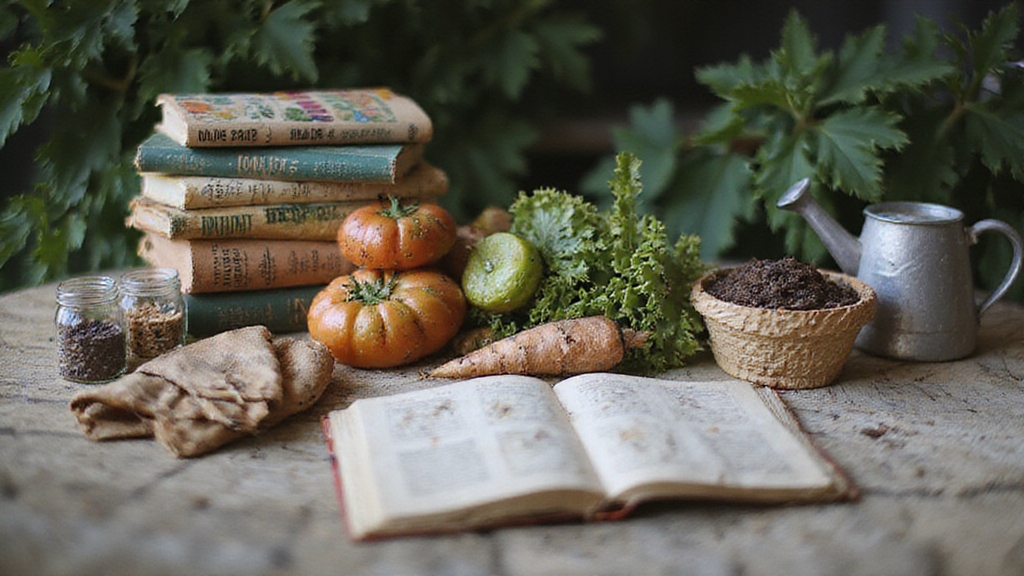
Because organic gardening methods work with nature rather than against it, you’ll find these specialized books offer deeper insights into chemical-free approaches that protect both your family’s health and the environment. These resources teach you sustainable techniques that build soil health, manage pests naturally, and create thriving garden ecosystems. A well-balanced potting mix containing peat moss, perlite, and biochar ensures excellent drainage and nutrient retention for your indoor garden. Understanding the critical role of soil microorganisms helps you create conditions where beneficial bacteria and fungi support plant health naturally.
The best organic gardening books for beginners include:
- “The Vegetable Gardener’s Bible” by Edward C. Smith – Provides clear guidance on organic soil preparation, planting schedules, and natural pest control methods
- “Rodale’s Basic Organic Gardening” by Deborah L. Martin – Introduces core organic principles, composting techniques, and chemical-free fertilization
- “Organic Gardening for Everyone” by CaliKim – Offers accessible, beginner-friendly approaches to starting your chemical-free garden
These books emphasize soil biology, beneficial microorganisms, and sustainable practices that reduce your environmental impact.
Specialized Gardening Books for Container, Flower, and Small Space Growing
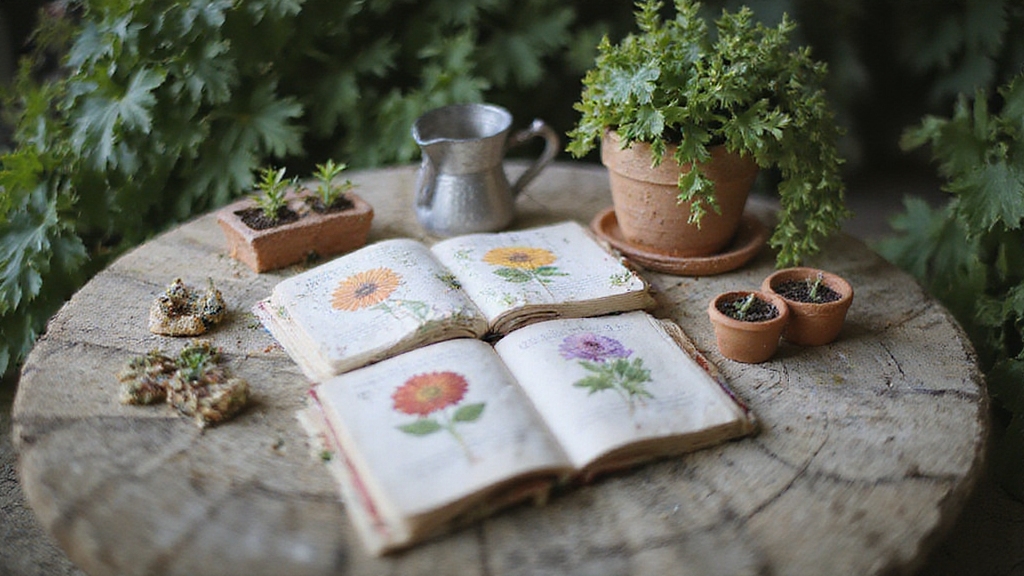
These specialized gardening books address unique spacing challenges, container limitations, and specific growing environments that many beginner gardeners encounter in modern living situations.
Modern urban gardeners face distinct challenges with limited space, sunlight restrictions, and container growing that require specialized knowledge and targeted solutions.
Container Gardening Essentials
You’ll find *Complete Guide to Container Gardening* by Better Homes and Gardens provides thorough basics, while *Container Gardening For Dummies* offers accessible planting techniques. *The Bountiful Container* focuses specifically on year-round vegetable growing, covering varieties, watering, fertilizing, and pest management.
Design and Aesthetics
Pamela Crawford’s *Instant Container Gardens* features 158 full-color pages with step-by-step illustrations, planting recipes, and maintenance tips that emphasize visual appeal. For comprehensive guidance, *The Practical Encyclopedia of Container Gardening* delivers detailed techniques with exceptionally high reader satisfaction.
Small Space Solutions
These books cover container selection (cement, plastic, terra cotta), soil mix recommendations, and plant profiles. You’ll learn vertical gardening techniques, balcony arrangements, and window box strategies that maximize limited sunlight and space efficiently.
Garden Planning and Design Resources for First-Time Gardeners
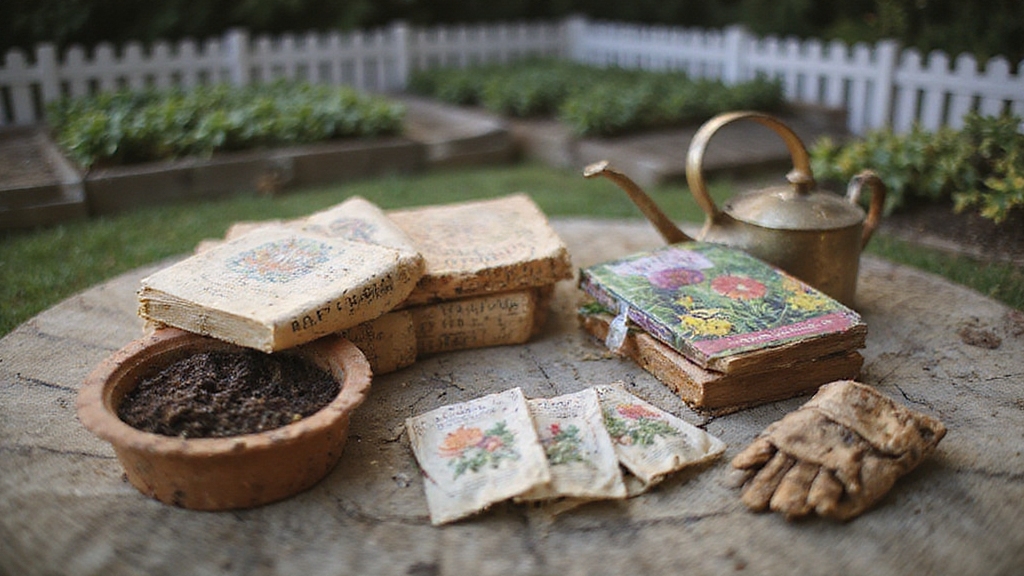
Just as you’d never build a house without a blueprint, successful gardening starts with thoughtful planning and design. Learning fundamental principles like scale, proportion, and focal points helps you create a harmonious garden rather than randomly placing plants. Proper planning involves selecting the ideal soil mix for container gardening to ensure optimal growth, aeration, and nutrient absorption, particularly in limited spaces.
Essential design resources include:
- The Essential Garden Design Workbook: Second Edition – offers structured approaches used in professional garden design schools
- Square Foot Gardening by Mel Bartholomew – provides detailed plans for organizing planting in compact, manageable sections
- Raised Row Gardening by Jim and Mary Competti – emphasizes organic, no-till methods using affordable materials
These books teach you to visualize spatial relationships and flow before execution. They combine practical construction guidance with aesthetic principles, helping you build confidence while creating sustainable, beautiful gardens that enhance curb appeal. Beyond physical books, consider adding a comprehensive plant encyclopedia to your collection, as these resources provide invaluable information about plant care, growth habits, and compatibility that transcends seasonal trends.
Step-by-Step Guides for Creating Your First Vegetable Garden
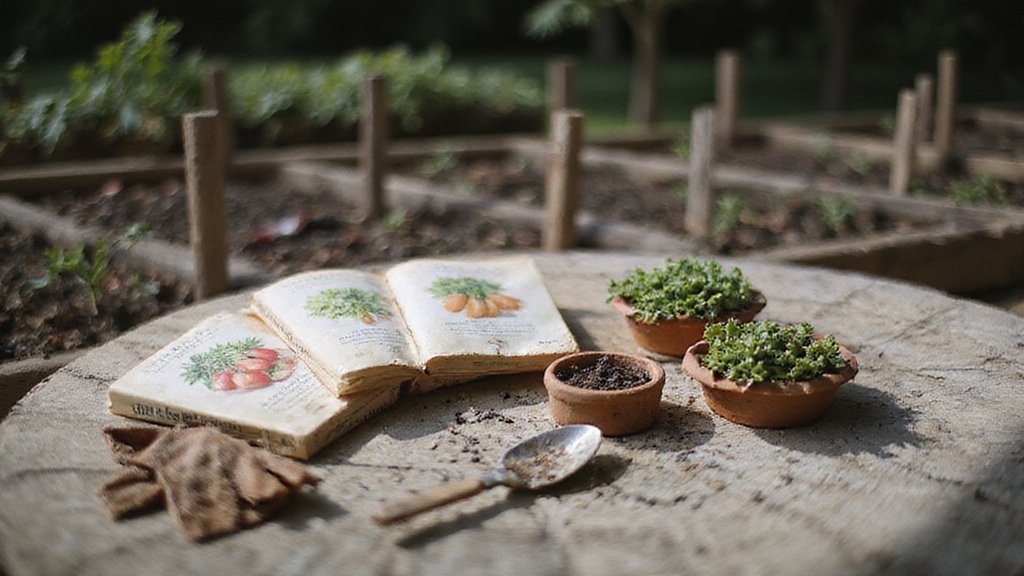
Creating your first vegetable garden transforms from overwhelming challenge to manageable project when you break it down into clear, actionable steps.
Site Selection and Preparation
Choose a sunny location with 6-8 hours of daily sunlight, level ground, and water access. Test your soil quality, then add organic matter to improve drainage and fertility. Clear weeds, rocks, and debris completely. Proper application techniques when using natural herbicides can also help manage weeds without harming your soil. Avoid windy areas that could damage your young plants and affect their growth.
Success starts with the right foundation: sunny spots, quality soil, and proper preparation set your garden up to thrive.
Choosing Your First Crops
Select easy-to-grow vegetables like lettuce, carrots, beans, and peppers that match your local climate. Start small with just a few varieties to keep things manageable.
Planting Strategy
Follow seed packet instructions for spacing and depth carefully. Stagger planting dates for continuous harvests.
Ongoing Care
Water deeply 1-2 inches weekly, apply mulch to retain moisture, and monitor for pests regularly.
Photography-Rich and Project-Based Books That Make Learning Fun
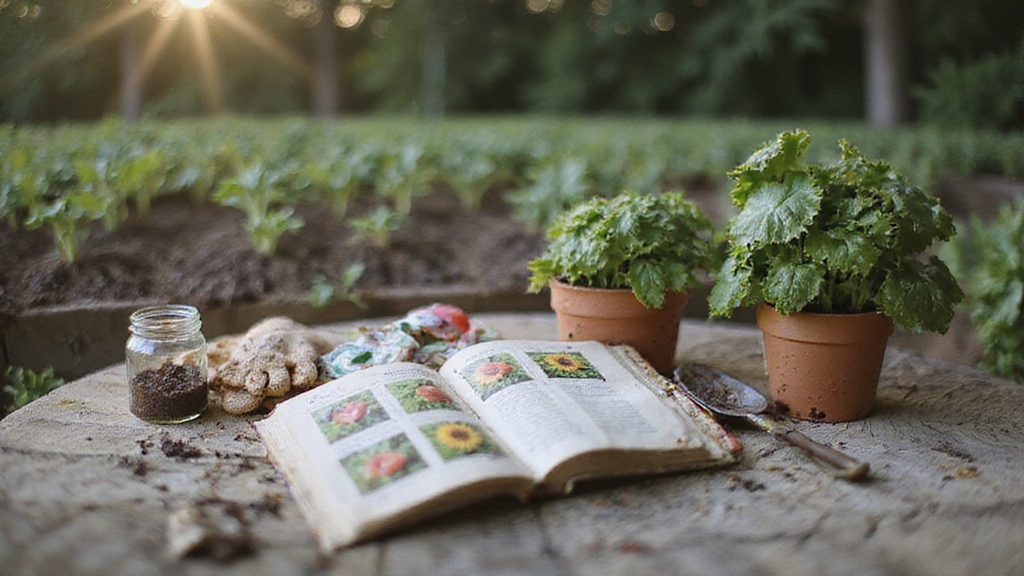
Visual learners will discover that photography-rich gardening books transform complex concepts into clear, actionable steps that build confidence from day one. These books combine vibrant photographs with hands-on projects, making gardening feel approachable rather than overwhelming.
Project-based books offer tangible activities that reinforce learning through practice. You’ll find yourself succeeding with manageable tasks while building essential skills gradually. Consider these standout options:
- Julia Watkins’ *Gardening for Everyone* – Features beautiful photography alongside simple projects like brewing compost tea and making seed tape
- CaliKim’s *Organic Gardening for Everyone* – Combines vibrant photos with concise organic gardening instructions
- Barbara Pleasant’s guides – Include step-by-step photography for over 30 small-scale projects with progressive garden plans
These visual demonstrations translate gardening concepts into practical steps, helping you experiment and succeed while building ecological literacy through sustainable practices. Barbara Pleasant’s latest work, *Starter Vegetable Gardens, 2nd Edition*, offers excellent examples of this approach with its trade paperback format that makes it easy to reference while working in your garden.
Frequently Asked Questions
How Much Should I Expect to Spend on Gardening Books as a Beginner?
You’ll typically spend $15-$50 on your initial collection of gardening books. Start with one or two mid-range books priced between $10-$25, which offer thorough how-to guides and plant profiles.
You can find quality options under $10 for basic principles. Consider checking your library first, buying used copies online, or choosing e-books to reduce costs while you’re learning fundamental skills.
Are Digital or Physical Gardening Books Better for Outdoor Reference While Gardening?
Physical books work better for outdoor reference while you’re actively gardening. You can flip pages quickly without worrying about screen glare, battery life, or dirt damaging expensive devices.
However, you’ll want to print key pages from digital books instead of bringing the whole device outside. This protects your investment while giving you the reference material you need in the garden.
Which Gardening Books Work Best for Specific Climate Zones and Regions?
You’ll find climate-specific books work better than general guides. For Pacific Northwest gardens, choose *The Timber Press Guide to Vegetable Gardening in the Pacific Northwest* for wet winters, dry summers.
Cold climate gardeners need *The Northern Gardener* for harsh zones. California gardeners benefit from *Sunset Western Garden Book’s* multiple climate zones. These regional books provide accurate planting dates, suitable plant varieties, and local weather adaptations that generic books can’t match.
How Often Are Gardening Books Updated to Reflect New Techniques and Varieties?
Gardening books typically get updated every 3 to 5 years, depending on their popularity and market demand. You’ll find that beginner guides receive more frequent revisions since they need current best practices, new plant varieties, and updated techniques.
Publishers focus on adding sustainable methods, climate-aware gardening, emerging technologies, and organic practices. Specialized books in permaculture or biodynamic gardening update more gradually, reflecting their niche markets.
Can I Learn Gardening Effectively From Books Alone Without Hands-On Experience?
You can’t learn gardening effectively from books alone. While books provide excellent foundational knowledge about plant care, soil basics, and garden planning, they can’t replace hands-on experience. You’ll miss indispensable sensory learning like evaluating soil texture, recognizing pest damage, and understanding your local growing conditions.
Books work best when you combine them with actual practice, starting small with container plants or garden plots.
Conclusion
You’ve discovered excellent resources to start your gardening journey with confidence. These books will guide you through essential skills, from soil preparation to harvest time. Choose titles that match your space, interests, and growing goals. Start with one expansive beginner guide, then add specialized books as you expand your knowledge. Remember, gardening improves with practice, patience, and continuous learning. Your garden success begins with turning these pages into real-world growing experience.

